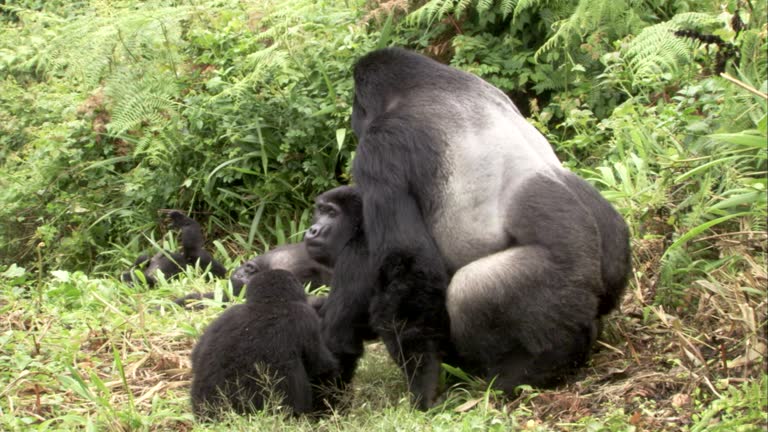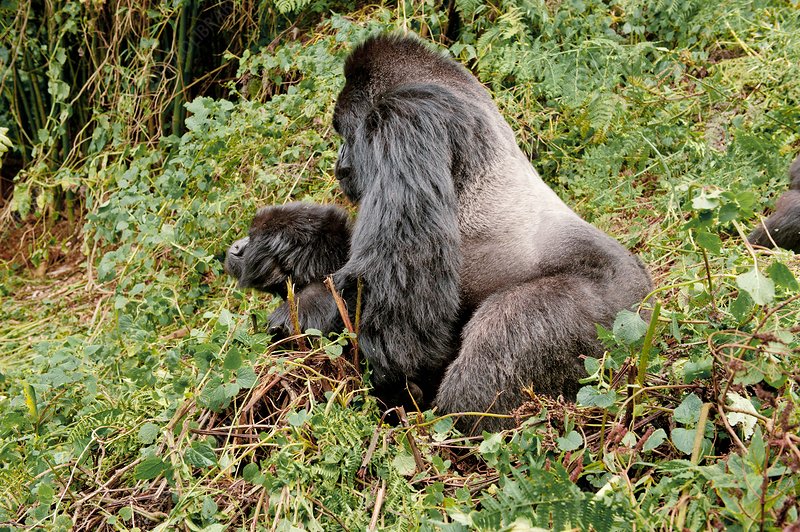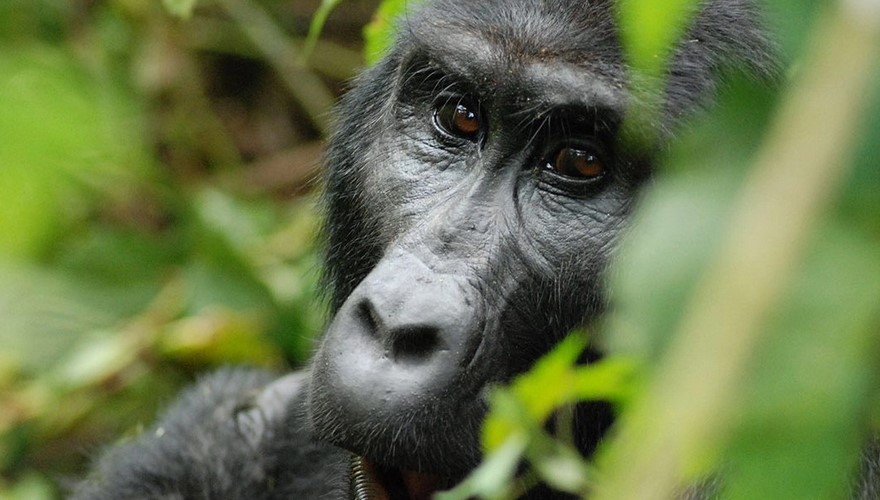The Intricate World of Gorilla Mating

The Intricate World of Gorilla Mating : A Closer Look at Breeding Behaviors and Parental Care
The Intricate World of Gorilla Mating : Gorillas, our closest relatives in the animal kingdom, exhibit fascinating mating behaviors that reflect their complex social structures and emotional intelligence. While the process of reproduction is vital for the survival of the species, the rituals and interactions surrounding gorilla mating reveal much about their social dynamics and relationships. This blog delves into the nuances of gorilla mating, the reproductive biology of males and females, and the tender nature of gorilla parenthood, providing a comprehensive view of these remarkable creatures.

Understanding Gorilla Mating
Gorilla mating, scientifically known as copulation, is a multifaceted process marked by both physical and behavioral cues. In the wild, dominant male silverbacks typically initiate mating, selecting females that are in estrus—indicated by swollen genitals and reddened skin. This readiness signals that the female is receptive, prompting the male to engage in various courtship displays, such as chest-beating and roaring. These displays not only assert dominance but also attract the attention of the females.
The mating ritual begins when a female signals her receptiveness by presenting herself, lifting her tail, and exposing her genital area. The male approaches, gently touching and smelling the female’s genital region to confirm her readiness. Once the moment is right, copulation occurs, with the male mounting the female dorsally, holding her waist as he performs thrusting motions. The act of copulation typically lasts between 2 to 5 minutes, during which the male usually completes 3 to 5 thrusts. Following this intimate encounter, the pair often rests together, reinforcing their social bonds.
Reproductive Biology: A Dual Perspective
Female Gorilla Reproductive Biology
Female gorillas undergo a complex reproductive cycle influenced by hormonal changes and social interactions. Their menstrual cycle spans approximately 28 to 30 days, including 2 to 3 days of bleeding. During the estrus phase, the female exhibits physical signs, such as genital swelling and skin reddening, signaling to dominant males that she is ready to mate.
Typically, female gorillas give birth after a gestation period of around 8.5 months, resulting in a single infant weighing between 4 to 5 pounds. The interval between births ranges from 4 to 6 years, allowing mothers to provide extensive care and nurturing to each infant. Hormonal fluctuations, particularly increases in estrogen and progesterone, play a crucial role in regulating the female’s reproductive cycle, enabling her to time mating opportunities effectively.
Male Gorilla Reproductive Biology
On the other hand, male gorillas reach sexual maturity between 12 to 15 years old, with dominant males exhibiting surges in testosterone during mating seasons. This increase in hormones not only stimulates sexual behaviors but also enhances their chances of attracting females. Dominant males engage in elaborate courtship displays to assert their position within the group and signal their readiness to mate.
Male gorillas often compete for breeding rights, and their reproductive success is largely dependent on their dominance status, age, and overall health. They typically engage in polygynous mating, where a single male mates with multiple females within the group. During copulation, males exhibit specific behaviors—grasping the female’s waist and performing thrusts—which are crucial for successful reproduction.
Recognizing Signs of Mating Readiness
Physical Indicators of Female Readiness
Identifying when a female gorilla is ready to mate involves observing her physical changes. When in estrus, her genital area becomes noticeably swollen and pinkish-red, while the skin around her face, neck, and shoulders may redden as well. In addition to these visible changes, her nipples enlarge, and she may produce clear or cloudy vaginal discharge. These cues signal to dominant males that she is receptive to mating.

Behavioral Signals of Receptiveness
In addition to physical signs, female gorillas exhibit distinct behavioral changes that indicate their readiness to mate. A female may present herself to dominant males, positioning her body to display her genitals and inviting them to approach. Behavioral cues include increased vocalizations, pacing, and restlessness, alongside initiating contact with dominant males.
Researchers and observers closely monitor these behaviors to determine the optimal times for mating, taking into account the female’s age, menstrual cycle length, and prior breeding intervals. Typically, females will begin breeding around 10 to 15 years of age and will experience 28 to 30-day menstrual cycles, with a gap of 4 to 6 years between births.
Observational Methods for Identifying Mating Readiness
To accurately gauge mating readiness, trained observers utilize a combination of visual inspections, hormone analyses, and detailed behavioral data collection. This comprehensive approach ensures a deeper understanding of gorilla reproductive cycles, allowing researchers and conservationists to promote healthy reproduction within gorilla populations.
The Multifaceted Nature of Gorilla Mating
Interestingly, gorillas do not mate solely for reproductive purposes. Their mating behaviors also serve social functions, strengthening bonds within their groups and establishing dominance hierarchies. Female gorillas may engage in mating with multiple males, including subordinate ones, as a means of fostering social ties and reducing aggression within the group.
Additionally, dominant males may mate with females outside their reproductive prime to assert their dominance and maintain social stability. Gorillas often engage in affectionate behaviors during mating, such as gentle touching, grooming, and vocalizations, which help to reinforce emotional connections and group cohesion. Even non-reproductive mating behaviors, such as interactions between juveniles or same-sex individuals, occur, highlighting the complexity of gorilla social dynamics and relationships.
Breastfeeding and Weaning Among Gorillas
Once born, gorilla infants are entirely reliant on their mothers for nutrition, primarily through breastfeeding. Female gorillas nurse their infants for about 3 to 4 years, although some may continue breastfeeding for up to 5 years. This extended nursing period is critical for the infant’s growth, immune system development, and the formation of a strong mother-infant bond.
During this time, mothers facilitate weaning by gradually reducing milk production and encouraging the infant to explore solid foods. The weaning process typically occurs between 3 to 5 years of age and coincides with several developmental milestones, including the emergence of permanent teeth and increased social interaction with peers.
Parenthood and Its Challenges
The Role of Mothers
Gorilla parenthood is characterized by dedicated maternal care. Mothers provide essential nutrition, protection, grooming, and emotional support to their young. The bond between a mother and her infant is crucial for the infant’s survival, as the attentive care and nurturing from the mother significantly contribute to its development.
The Role of Males
While the primary responsibility for child-rearing lies with the mother, dominant male gorillas also play a vital role in protecting and guiding their infants. They engage in playful interactions, teaching vital social skills and ensuring the safety of the young ones within the group. This cooperative parenting approach fosters a supportive environment for the infants to grow and thrive.
Infant Mortality Rates
Despite the care provided by gorilla mothers and the protective presence of dominant males, infant mortality rates can be significant, with approximately 20-30% of infants dying within their first year. Factors contributing to these rates include birth complications, respiratory infections, malnutrition, and human disturbances in their habitats. Conservation efforts are crucial in mitigating these risks and ensuring the survival of gorilla populations.
Conclusion
Gorilla mating and parenthood are intricate processes that highlight the complexity of social interactions and the emotional intelligence of these remarkable primates. From the elaborate courtship rituals of dominant males to the nurturing care of mothers, gorillas demonstrate advanced social behaviors that reflect their sophisticated relationships.
Understanding the reproductive biology of gorillas is not only essential for the conservation of their populations but also enriches our appreciation for these magnificent creatures. By fostering awareness and supporting conservation efforts, we can help ensure that future generations of gorillas continue to thrive in their natural habitats, preserving the intricate social dynamics and familial bonds that make them so unique. As we uncover more about their behaviors and interactions, we recognize the importance of protecting these extraordinary animals and the ecosystems they inhabit.



